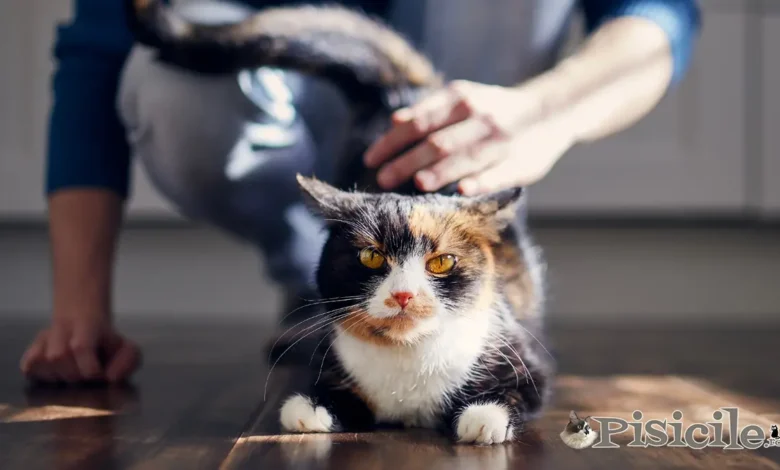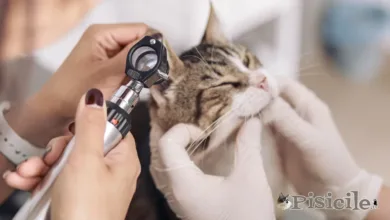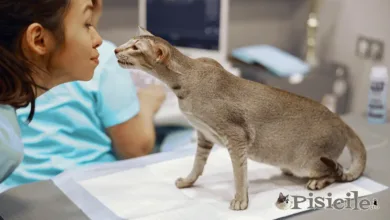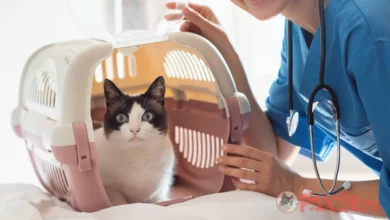
Feline Hyperesthesia Syndrome (FHS) is a rare and poorly understood condition by researchers and doctors, which can cause confusion and concern among cat owners. If you notice that your cat frequently sheds its skin and looks as if it is dehydrated, then this condition may be present. Also because of this condition, some cats start attacking their tails or running and jumping for no particular reason.
Feline hyperesthesia syndrome is characterized by an extreme sensitivity to touch, especially in the back area, and manifests itself in bizarre and often confusing behaviors. Since FHS is a poorly understood condition, knowing the symptoms and treatment options can help improve the quality of life for affected cats.
Subject
What is feline hyperesthesia syndrome and what are the symptoms?
FHS is a fairly rare disease affecting mainly Asian cat breeds such as Siamese, Burmese, Abyssinian and Persian. The first symptoms usually appear between the ages of one and five. Hyperesthesia, literally translated as "exaggerated sensitivity", refers to extreme sensitivity to stimuli, especially touch.
Cats suffering from hyperesthesia syndrome show symptoms such as:
- Frequent flaking of the skin and without justifiable reason. The cat's fur stands up and it looks as if it's been flushed.
- Twitching or rippling of the skin, especially in the back area.
- Intense licking of the body especially in the area of the back and sides.
- Attacking its own tail.
- Running around the house and loud vocalizations, often followed by periods of complete calm between episodes.
- Unjustified agitated behavior.
Causes of feline hyperesthesia syndrome
The exact origin of FHS (Feline Hyperesthesia Syndrome) remains a subject of debate, and this condition has frequently been associated with various dermatological, behavioral, neurological or orthopedic problems.
In the framework of several researches, two main theories were issued:
1. Neurological disorder: Some specialists believe that FHS is related to nerve dysfunction, either due to an injury to the spine or abnormal brain activity similar to epileptic seizures.
2. Obsessive-compulsive behavior: Another theory suggests that the symptoms are actually manifestations of an obsessive-compulsive disorder, triggered by stress or anxiety factors.
Diagnosis of FHS
As a very rare condition and the symptoms of which can easily be confused with other conditions or parasitic infestation, the diagnosis of FHS is one of exclusion, meaning that the vet must rule out other possible causes of the symptoms. For example, flea allergy dermatitis or osteoarthritis can have similar symptoms, such as increased sensitivity in the back. A thorough physical exam, including evaluation of the cat's skin and joints, is essential to rule out these conditions.

Also read the article: The most common skin problems in cats
Treatment of feline hyperesthesia syndrome
Treatment of FHS varies depending on the suspected cause. If the syndrome is thought to have a behavioral component, your veterinarian may recommend mood stabilizers such as fluoxetine or amitriptyline, along with behavior modification techniques such as establishing a regular feeding schedule and introducing interactive games.
The main goal of treatment is to give the cat a quality life, free from discomfort, pain or stress. In some cases, medication may not be necessary if episodes can be prevented simply by avoiding touching sensitive areas of the cat's body. However, if episodes occur suddenly or are self-induced (eg, during normal care), drug intervention is highly indicated.
A common trigger for these episodes is itching. Therefore, a first step in treatment is to manage the cat's itching. It is important to avoid food allergens, flea infestations and dermatological problems of a fungal nature. Also, taking essential fatty acid spot-on drops or salmon oil supplements can reduce the skin's sensitivity to itching. In some cases, your vet may recommend prednisolone (a corticosteroid) to control inflammation and itching.
If the veterinary evaluation suggests a neurological problem, gabapentin or phenobarbital can be added to the treatment protocol with good results. Psychoactive medications such as fluoxetine and clomipramine may be prescribed to manage compulsive behavior.
In cases of self-mutilation, extra attention should be paid to any existing or past injuries such as tailbone fractures, osteoarthritis, old pelvic fractures or problems with the perianal glands.
In conclusion, although feline hyperesthesia syndrome cannot be completely cured, proper management of the symptoms can allow affected cats to live happy and healthy lives. If you notice unusual behaviors in your cat, it is important to take her to a veterinarian to determine if FHS could be the cause and to establish an appropriate treatment plan.



